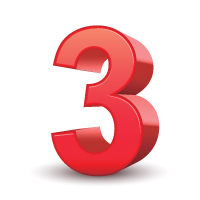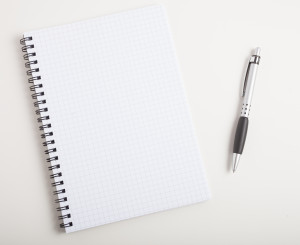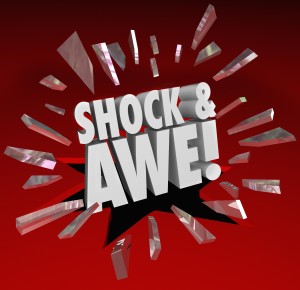Speech Tips
The Rule of Three!
Public Speaking: How Long for the First Draft & Best Format for Delivery
Public Speaking: How Long for the First Draft & Best Format for Delivery
I love learning from other people. I love going to experts and figuring out their tricks and secrets. For presentations, I like to be successful. I like to enjoy the process. Top pros are successful and enjoy the process. Here’s what they say about:
- How long to make the first draft.
- When to use full text and when to use notecards.
How Many Pages to Write?
How many pages or words it takes to do 20 minutes of presentation depends somewhat on your speaking style. Time your speech as you practice it to tune it up in length or down to meet your requirements.
- General rule for the first draft is that a 20-minute speech runs about 2,000 words or about eight double-spaced pages. This is based on an average speaking rate of 100 words per minute. Clear speech is likely to be perhaps 90 words a minute. For some people, even 85 words per minute.
Format of Speech Delivery: Text versus Cards
- There is no standard rule for whether to use a full script text or notes on cards.
- If you are very familiar with the material or you have made a similar presentation several times before, notes on cards probably work well.
- If the speech is new ground, you will probably want to begin working with the full text, at least for rehearsals.
- The greatest benefit of notecards is allowing you more eye contact with the audience. Some people use their powerpoint slides as their notes, but they have a paper copy also.
- As described in a previous blog, with the full text written out, a great strategy to maintain eye contact is to look up at the end of each sentence.
- The drawback to having only notes is you may ramble and lose some of the ear appeal that you wrote into the original speech.
- Occasion
- If you are doing an informal farewell, the polish is not as important as sincerity.
- If delivering a speech to hundreds of listeners, they expect the remarks to run smoothly and finish on time. So you definitely want to have prepared text, unless you have memorized the remarks.
Be sure to watch our English Speech Tips videos and Accent Reduction Tip videos for more English pronunciation and accent reduction exercise.
Rerun from Sep 4, 2013 and Oct 19, 2016
Seize Your Audience’s Attention When You Do A Presentation
Seize Your Audience’s Attention When You Do A Presentation
My favorite opener: John Paul Getty once told a group of would-be billionaires his secret of success was: “Rise early, work hard, strike oil.”
Now, here are 3 different ways to grab your audience’s attention right away:
 1. Begin with a quotation. When it comes to having an impact with quotations, it’s who you know, not what you know. So the “who” you quote should be an attention-getter. Use well-known celebrities, politicians, authors, and leaders in their field. If you’re not sure the name will be recognized, describe the source’s authority. For example, one of China’s foremost business leaders…
1. Begin with a quotation. When it comes to having an impact with quotations, it’s who you know, not what you know. So the “who” you quote should be an attention-getter. Use well-known celebrities, politicians, authors, and leaders in their field. If you’re not sure the name will be recognized, describe the source’s authority. For example, one of China’s foremost business leaders…
2. Begin with a question. “Do you know how you can double your investment in one year?”
3. Open with a shocking statistic. “Half the money spent on advertising is thrown away.”
Rerun from Nov 21, 2016
Public Speaking Skills: How Much Time To Prepare for A Speech
Public Speaking Skills: How Much Time To Prepare for A Speech
Don’t you just hate the mad scramble for getting ready for a presentation? You can avoid that scramble. The top professionals – the top pros –do. Here are their secrets:
How much time to prepare for a speech?
- Start right away. Even if you book the speaking engagement or presentation a year in advance, start then.
- Then you scan your media world for great articles related to your subject, quotes that work, and especially a strong grabber or opener.
- The worst thing is to sit down to write your speech or presentation and not have enough materials.
- This pre-preparation stage takes little or no time, just attention. Keep your eyes and ears open for potential contributions to the speech.
- The intensive period of writing and rehearsal should begin at least three weeks before the speech date.
- The speech preparation process requires blocks of uninterrupted time.
- While writing, you don’t want every great thought to be interrupted by phone calls or visitors.
- While rehearsing, you won’t be able to work on your timing and pacing unless you can run through the entire speech.
- You might want to start writing the speech at night or on the weekend.
- Block off a total of about five to 10 hours, preferably in one- or two-hour blocks to work on the first draft.
- Plan to spend two to five hours revising the speech.
- Then plan on at least two or three rehearsals (20 to 30 minutes each for a 20-minute speech).
- Put this on your calendar so you can be sure you have enough time.
- Keep track of how much time it actually takes you to prepare your speech.
- Maybe you can create the speech in less time than suggested here, or maybe you need to allow for more time. If the speech is very important, you will want to spend extra time getting it just right.
Next time will be how long to make your first draft of your presentation. You don’t have to be blind again for your next speech!
Be sure to watch our English Speech Tips videos and Accent Reduction Tip videos for more English pronunciation and accent reduction exercise.
Rerun from 08/28/2013 and 10/12/2016
Start Your Presentation With A Bang!
Start Your Presentation With A Bang!
For today’s dollop of clear English speech coaching, here’s more advice about starting your presentation with a bang.
1. If you do nothing else to prepare for your speech, make an opener that not only gets people’s attention but makes them think about your theme.
2. For that reason, wait to prepare your opener until after you outline the body of your presentation.
3. Start thinking about your opening when you first agree to give the speech.
Rerun from 08/12/2013 and 11/14/2016











